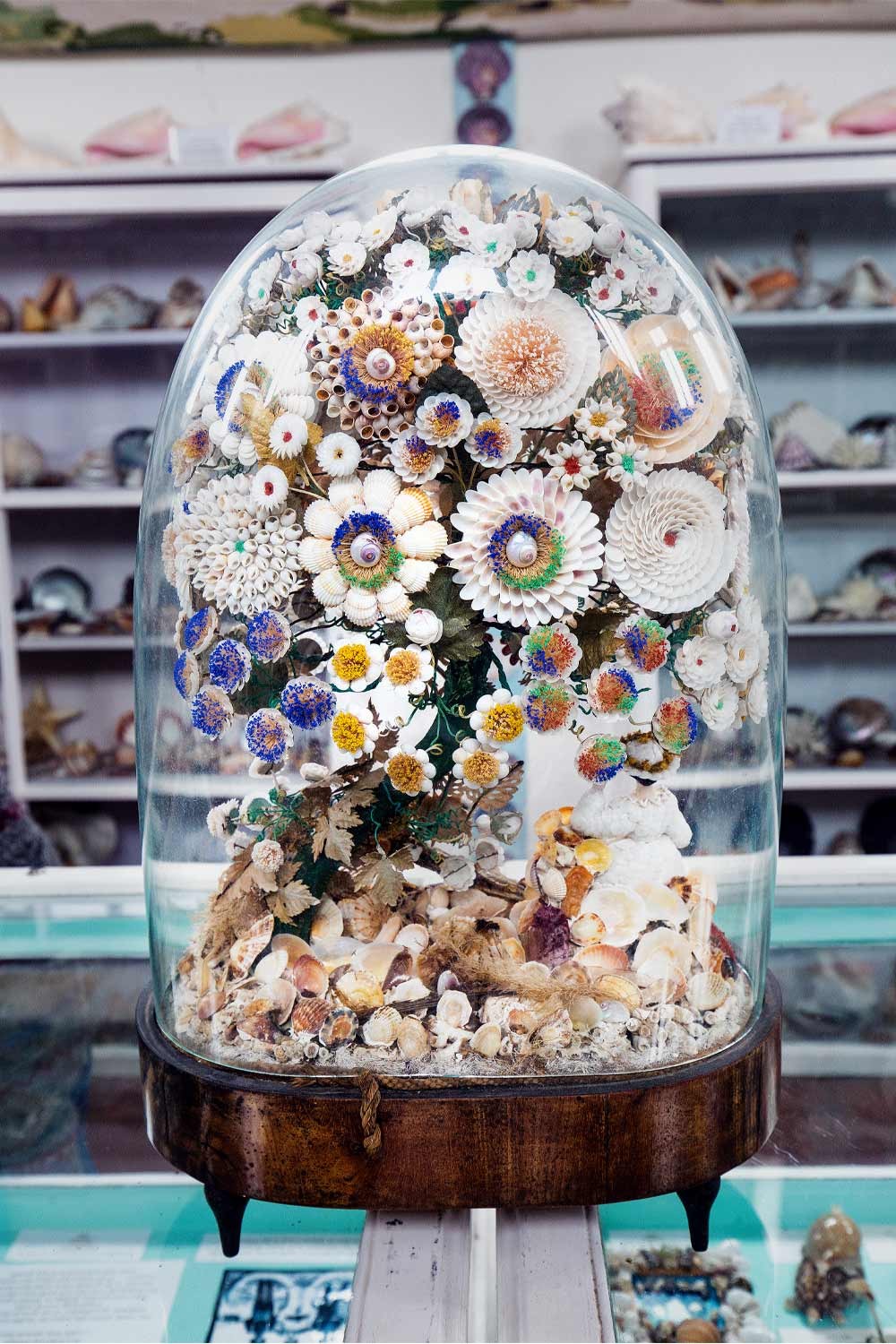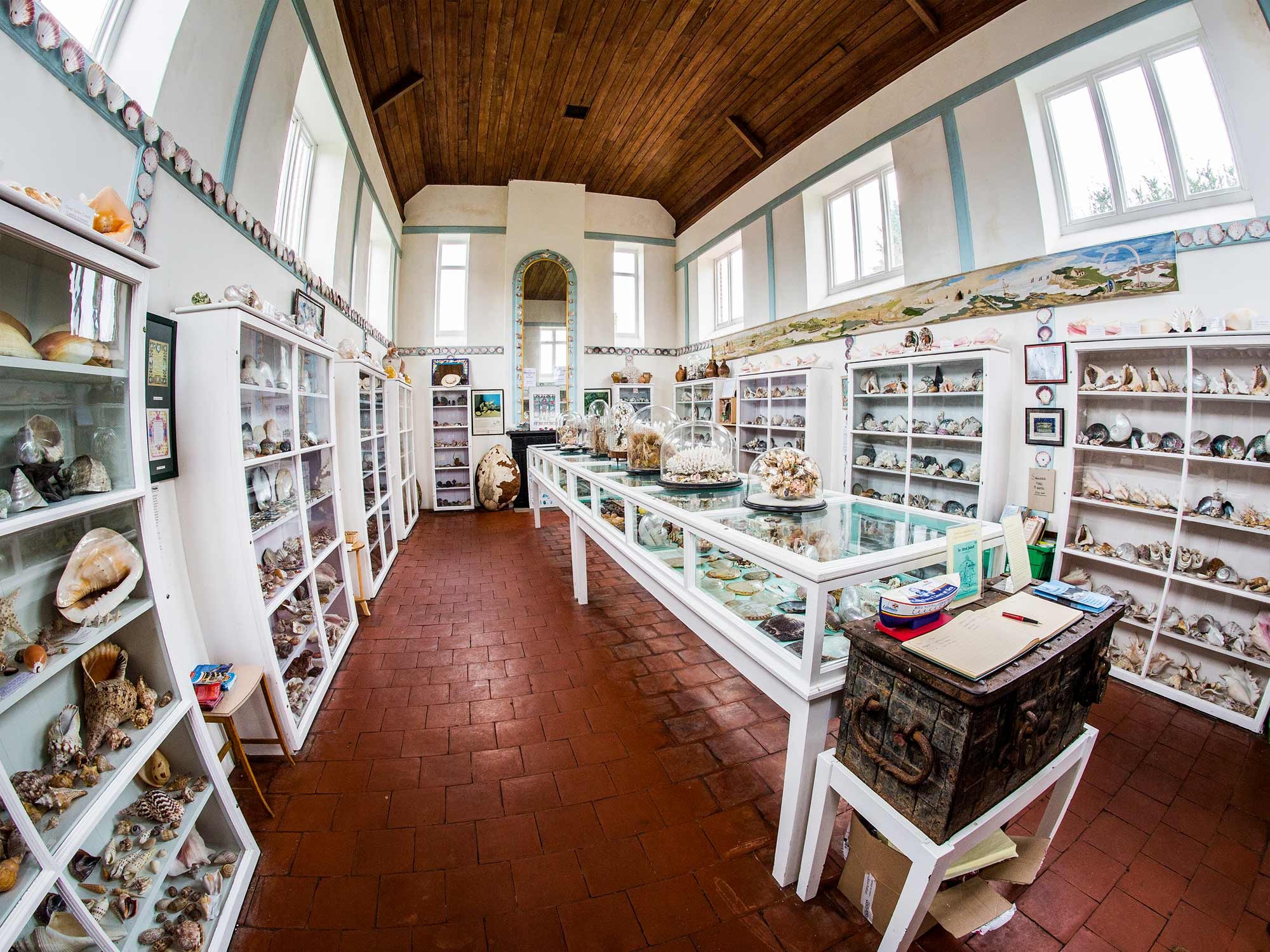
The Shell Museum at Glandford
Exquisite seashells, a collection of fossils and birds’ eggs, local archaeological finds and works of art – the Shell Museum at Glandford is a true cabinest of curiosities, as Sylvia Steele discovers
The signpost warning of an ‘unbridged ford’ deters much of the traffic along the narrow lane, which is flanked by immaculate brick and flint cottages. Often fondly referred to as the ‘model village’ of Glandford, Sir Alfred Jodrell (the former owner of nearby Bayfield Hall Estate) had built the houses around the turn of the 20th century to house local people and their families, whose main occupation was farming and some light industry in the old farm buildings.
Just a short stroll further, and on a grassy knoll overlooking the village is Glandford’s Shell Museum. Behind the black railings, flower-edged paths lead to a building that at first glance resembles a chapel with its Flemish gabled roof. A step inside reveals pristine white walls and a sense of harmony and peace.
Sir Alfred Jodrell built the structure to harmonise with the rest of the village, and he built it specifically for the storage and exhibition of his many artefacts and shells collected over a period of 60 years from around the world and previously stored at Bayfield Hall. After completion of the Shell Museum in 1915, Sir Alfred arranged the exhibits himself with the assistance of his sisters Lady Seale and Mrs. Ind.
Glass-fronted cabinets display shells of every hue and size, iridescent in the light from the unadorned glass windows above; some delicately decorated with ivory cameos, others intricately arranged in baskets, and the stories the shells tell of marine life beneath the sea are truly intriguing.
Among the shells that take pride of place here lies the jagged white jaw of a shark and the huge yellowing teeth of a whale. A bizarre walking stick carved from a shark’s vertebrae lies among fragments of pottery – one is a piece from Pompeii and another is a sugar bowl used by Queen Elizabeth I – together with examples of agate and other donated objects d’art
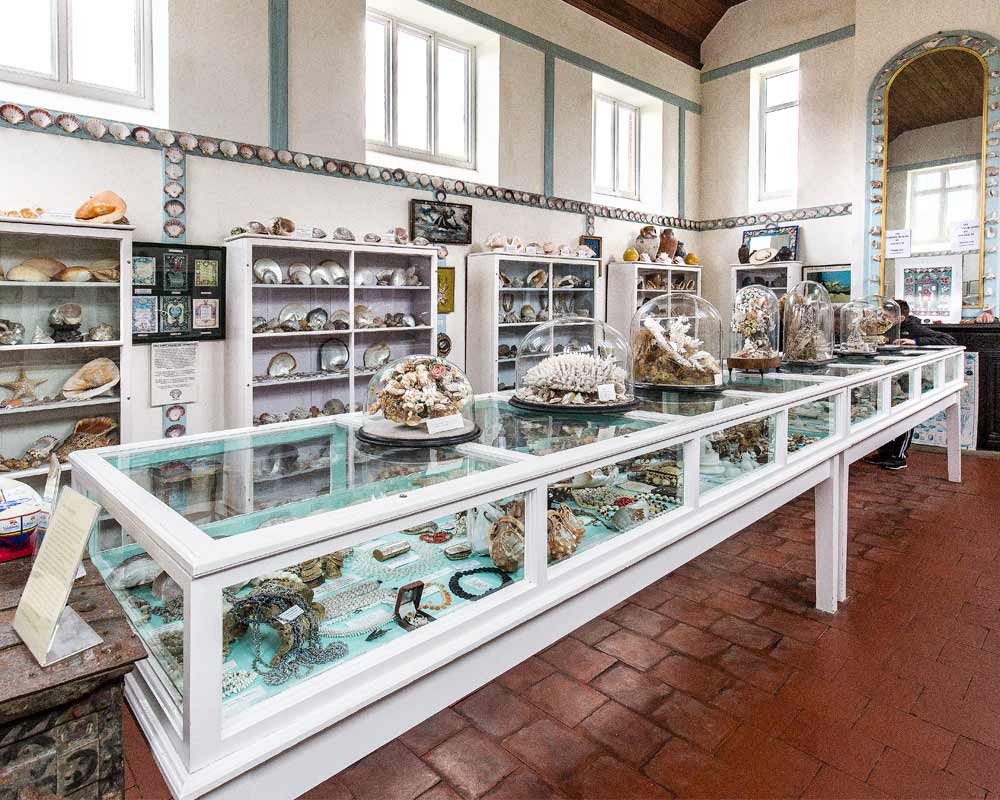
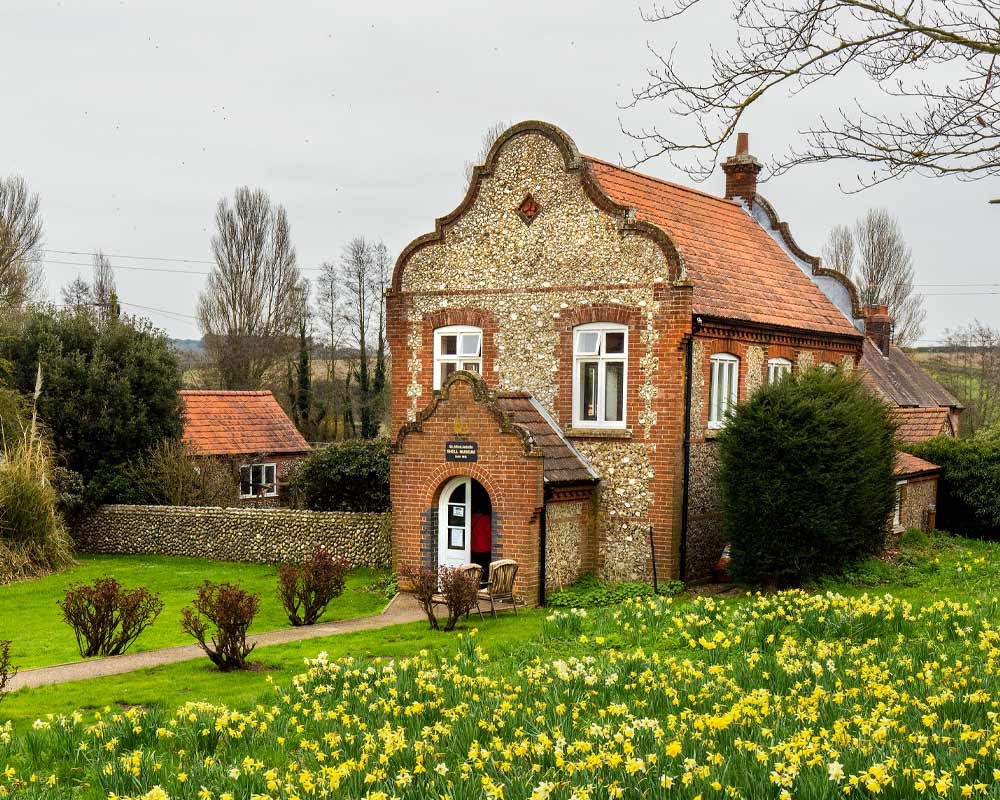
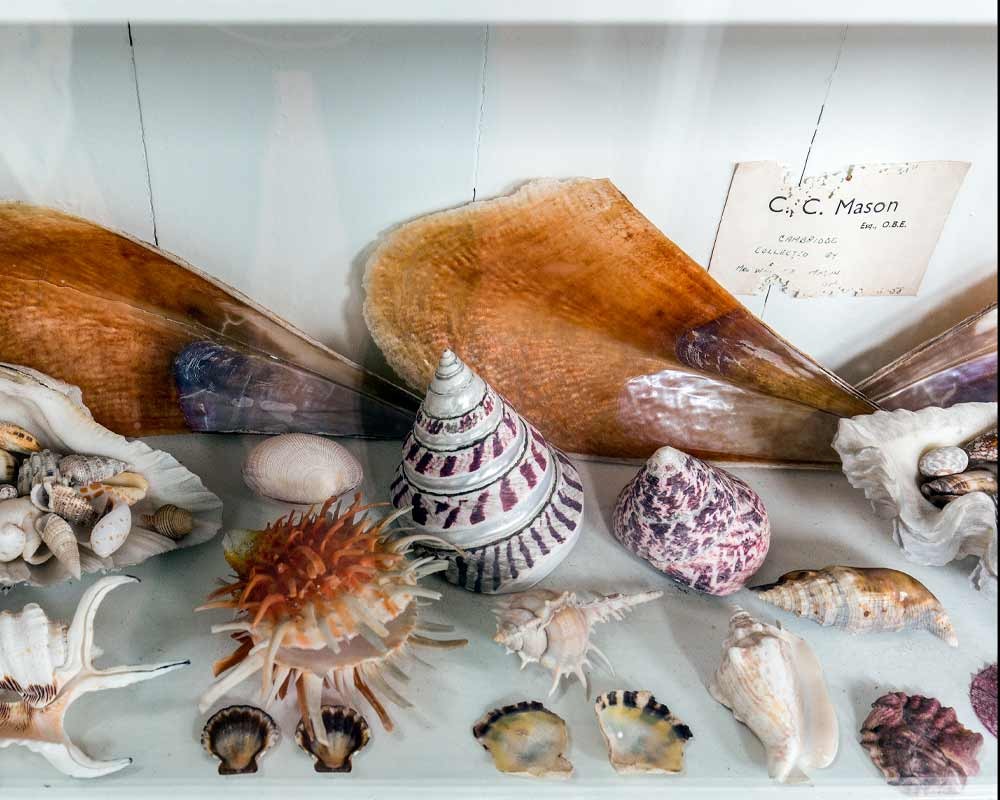
One that attracts much attention can be found in the delicate paper-thin shell of the Paper Nauttius. The descriptive card tells us this is the protected space built by the female Argonaut octopus as a case to cradle her eggs, before floating through the ocean where the eggs hatch and the young octopuses go their own way.
Among the shells that take pride of place here lies the jagged white jaw of a shark and the huge yellowing teeth of a whale. A bizarre walking stick carved from a shark’s vertebrae lies among fragments of pottery – one is a piece from Pompeii and another is a sugar bowl used by Queen Elizabeth I – together with examples of agate and other donated objects d’art.
One particular exhibit that many would say has found its rightful home in a museum of marine ecology is a tapestry depicting the North Norfolk coast, worked by local fisherman John Craske. Together with a painting on the opposite wall, it was presented to the museum by the executors of John Craske’s estate and has attracted much attention.
Glandford’s Shell Museum has a strong claim to be the oldest purpose-built museum in Norfolk – and it contains the finest collection of seashells in the whole of the UK. It’s a place to study Sir Alfred’s prized works of art and has been rightly described as “a rare museum for all who love beautiful things.”
Work on the Shell Museum was carried out by workmen from the estate cottages and who were employed on the Bayfield Estate. Attended by Wendy Gill (who acts as curator and custodian and is also verger of St. Martin’s Church) the Shell Museum is a small private trust that receives no public grants. However, a visit to Glandford’s beautiful Shell Museum wouldn’t be complete without including a glimpse inside St. Martin’s Church – which is sited along a hilltop above the village and looks over the River Glaven as it wends its way to the sea.
The parish church was in ruins by 1730 and it wasn’t until the end of the 19th century that St. Martin’s was rebuilt by Sir Alfred as a memorial to his mother, Adele Monckton Jodrell. He proceeded to decorate the church with everything typical of East Anglian churches – elaborate woodcarving and stained glass windows. A pew occupied by Sir Alfred Jodrell himself has at its head a carving of a dog with its head on his master’s coffin – said to have been copied from Landseer’s famous picture The Shepherd’s Chief Mourner.
Sir Alfred Jodrell died on 15th March 1929. A framed memorial card with his name hangs in the nave. At his request, a monument stands just inside the vestry door that commemorates all those who were actively engaged on the rebuilding of the church.
At his own request, no monument was erected to Sir Alfred Jodrell’s memory, but surely no better memorial could be devised than his charming, fascinating and captivating Shell Museum.
The Shell Museum at Glandford is open until the end of October from 10am-12.30pm and 2-4.30pm. It is closed on Sundays and Mondays. for more details, please contact 01263 740081 or visit www.shellmuseum.org.uk
